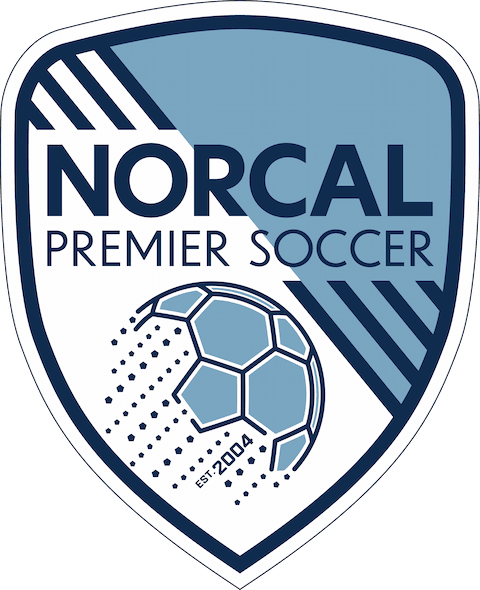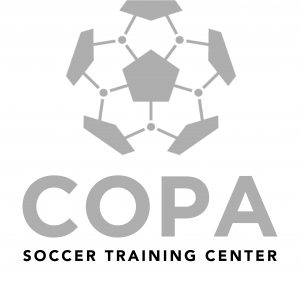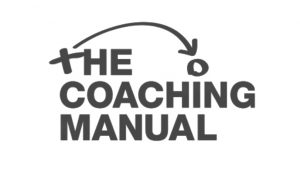Q&A: UCLA Women’s Head Coach Margueritte Aozasa

Note: NorCal Premier Soccer regularly sits down with an influential figure in the youth soccer landscape to pick their brain about a variety of different topics that are relevant in the current soccer environment in the United States. For this edition, we spoke with UCLA Women’s Soccer Coach Margueritte Aozasa. A Mountain View native, Aozasa starred locally for MVLA Soccer Club and Los Altos High School before playing collegiately at Santa Clara University. During that time, she also began coaching at MVLA before joining the Stanford staff in May of 2015. There, she helped the Cardinal to two national titles in seven years before UCLA hired her in December of last year.
NorCal: How did you fall in love with soccer?
Aozasa: I always laugh that I actually started soccer pretty late — I didn’t play a single time until I was in third grade. The reason for that was my brother, who’s two years my senior, played a season of AYSO and hated it so much that he actually secretly quit the team after two games and told my mom that he just didn’t have any more games. I never played, I was adamant that I wasn’t going to play soccer, that we hated soccer. Then it came to the point where every single one of my friends from school was playing soccer. My mom said, “well honey, if you want friends, you’re going to have to play soccer.” So I played one year of AYSO, mostly with all my friends, but they had also started to play club soccer and I was a little bit late to the party. In order to retain my friendships, I decided to try out for the club soccer team. I still wasn’t at the point where I was doing it because I loved soccer, it was mostly because my friend group was doing it and also it helped my mom in terms of after school care. I played AYSO for two years and that second year I joined MVLA. Really, I have to give all the credit to Albertin Montoya, one of the most prolific coaches in Northern California. He was my first club coach and through his passion and dedication, his knowledge for the game, I just came to love it. Everything I wanted to do was emulate what he was doing and I was super fortunate to be with my friends. We ended up being a pretty good club team and winning State Cup a few times but what was incredible was 16 of us ended up going to the same high school. All credit goes to MVLA, all credit goes to Albertin – he was really the catalyst for getting me into soccer and also for me getting into coaching. I’m so thankful.
NorCal: What was the youth soccer landscape like when you were growing up as compared to now?
Aozasa: It was so different. There were a lot of local teams and you pretty much played for the club in your area. It really wasn’t until we hit high school age that we really had anyone commuting more than 20-25 minutes to practice, it was all kids in the same school district. There was a lot of competition in terms of the number of clubs and the level of play, but it didn’t always feel like you were competing for players because you just played for the club that was right there. That’s definitely changed. It’s just culturally a little different. Then with State Cup, it was a three month tournament and that has changed. Even just the time commitment – I think we only trained twice a week until I was in high school. We did supplemental stuff on the side, but in terms of true team training, that’s what we did and we basically played the same 10 teams our whole career. I feel like I know players at Los Gatos and Santa Clara Sporting and what at the time was De Anza Force because we literally played them from U9 all the way through U18. We still traveled a decent amount but not to the scale that teams do now. The positive, though, is it’s really encouraging to see how much the game has grown. That piece I find very compelling and encouraging. I feel like I didn’t play that long ago but it’s a completely different era.
NorCal: When did you know that soccer was something that you wanted to take seriously and eventually turn into a career?
Aozasa: I’m so fortunate that I have never had a different job, I’ve only coached. There was a seven month period where I was a kindergarten aide but that was only because I’m a morning person and club soccer doesn’t start until 3:00. But like I mentioned earlier, Albertin was huge in my development as a coach. Unfortunately I tore my ACL twice in high school so there was a solid year-and-a-half, two years where I didn’t play. Rather than not go to training – all my friends were there – Albertin encouraged me to be there and sort of act as an assistant coach. So I started informally coaching when I was 14, 15-years-old. I just loved the game so much – my mom probably thought I was crazy – that if my training started at 5:30 I would tell her to not even pick me up from school and I would just go to the field. So the younger teams would start training at 4:00 and I would go there and either train with them or help them and then be there for my training. I did that all the way through high school. By the time I went to college and played one year during my freshman season, and now that I look back on it, I wonder how I did it, but I took on two club teams. I started coaching at MVLA and at MVLA things are a little different because a coach may take a team from U7 all the way through U18 so the team that just graduated last year was a team that I started in college. I loved it so much, obviously there are pros and cons to that system, but the relationships you form with players are incredible. I’m so thankful I had that opportunity. So I started coaching when I was 19 and then I just sort of never stopped. I never intended to coach in college, I thought it was something to revisit later because I was really happy in the club world, but in 2015 the job opened at Stanford. I was really fortunate that (head coach) Paul Ratcliffe thought of me. On the sideline of one of his daughter’s games, he asked a parent I was close with if I might be interested in the job. Two weeks later was my first day at Stanford. I was like, “how did I get here? But okay, thank you!”
NorCal: During your time at Stanford, the program was one of the most successful, if not the most successful, in the country. What was that experience like and what did you learn there that will help you now that you have your own program?
Aozasa: Yes, in some ways we were the most successful team when you look at wins, but when I think back to that experience, I barely think of (the winning). I was so fortunate to work with an incredible staff, we just had so much fun together. It was a perfect balance of personalities and skill sets. I loved every second of it. But there are a lot of things from that experience that have heavily influenced what I want to do now as a head coach. For instance, I think I really understand the importance of a great staff. Paul is amazing at many things but one thing he’s great at is making his staff feel valued, giving them ownership of the program, making sure they’re invested. All of those things I want to hold dear to my heart as a head coach who is responsible for four or five different staff members. The other thing is just the idea of professionalism and creating a winning culture. What can I put in place so that my players know every time they step on the field, it’s with the purpose to get better? That part is so important. And then also allowing players the space to communicate openly with the staff is important. That’s something that was one of the secrets to our success – the players also felt like they could talk to us, they could bring issues to us without us making a huge deal out of it and instead just talking about it. Opening those lines of communication, creating that culture where we’re all trying to achieve the same thing. If you see something, let us know and we’ll talk about it. Those are three things I want to take into my program now as the head coach.

NorCal: What from your experience as a player are you hoping to instill in the players in your program?
Aozasa: I’m probably not the only one who thinks this having been in the program, but what I took from my experiences at Santa Clara, was competitiveness, grit, just finding a way to be successful, finding a way to win. I think that’s something that (head coach Jerry Smith) instills in his players. We may not be the better team but we’re still going to find a way to win or we may not have seen this before, but we’re still going to find a way to be successful. That’s why they are successful, especially in the last few years, they’ve just found a way to win and I have so much respect for that. I would love to bring that into my program here. We’re going to pride ourselves on playing a certain brand and having talented individuals, but just as much we’re going to pride ourselves on finding a way to win, being competitive, not shying away from those big moments. That’s what Jerry does so well. It’s clear when you watch his teams play, they just find a way. I have a lot of respect for that. The other thing is, Jerry is very willing to adapt and adjust through the season based on what he has, what he doesn’t have, and what he’s against. I think at Stanford we had the great luxury of not having to adjust that often. But I feel good going into this program having been in a program as a player where we did adjust a lot and just found creative strategies to be successful when we were outmatched or up against elite players. We were just always willing to think outside of the box. This is a quality I hope our staff has here and I hope our players feel good about too.
NorCal: Something our women’s committee is trying to do is to encourage more women like you who played the game at a high level to stay involved with soccer and continue on as coaches. Your path doesn’t sound super traditional because you were coaching since you were 14 but how do we as a soccer society get more of the qualified women like yourself back into the game coaching?
Aozasa: My first thought goes more towards young coaches that start their path wanting to coach before they hit the impositions that may stop them from doing that. From there, I think that mentorship is the No. 1 thing you can provide that might get a female coach over that hump. At that point, it’s like, “is this my career or is this not?” If you have a great mentor, you can lean more towards “this is my career.” Whereas if you don’t, then you’re going to hit obstacles, perhaps, that drive coaches away. So there’s that piece, investing in young coaches and players. There are so many players who play at a high level so it’s just encouraging those players to try coaching and make it a more seamless transition. Based on my own experience, that happened through great mentorship. In terms of bringing women back into coaching, I’m not entirely sure what the solution is but making coaching more accessible could be the beginnings of that. I think that female coaches may feel hesitation when they haven’t done it before. I loved some of the programming that was done where it was just getting coaches very early in their career into environments where they were just given access to coaching in a broader sense and allowing them to learn. I don’t know if this has anything to do with me being a woman, but I know personally that I don’t love stepping into a situation that I don’t feel prepared for. I think giving them that education, giving them that knowledge, showing them how to manage a team, manage the parents from the club side (is important). I think the more that we can arm them at the beginning, the more likely they are to stay in the game.
NorCal: Anything else you’d like to add?
Aozasa: Just know that even though I’m not still in NorCal, I’m still very much a Northern California person. If there’s anything I can do to help out or offer mentorship – I still think I’m young and don’t know if I’m a great mentor – but I’d be happy to help out and do what I can.












